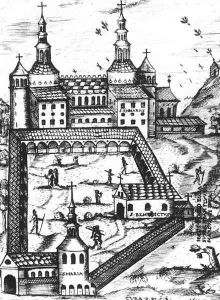Paul Petau Paintings
Paul Petau (also known as Paulus Petau or Paul Petavius) was not primarily known as an artist, but rather as a French scholar, historian, and book collector during the late 16th and early 17th centuries. Born in 1568 in Orleans, France, Petau came from a wealthy family, which afforded him the opportunity to pursue an extensive education. He studied at the University of Orleans and showed a particular interest in the humanities and historical studies.
Petau's reputation in the realm of arts is largely tied to his significant collection of manuscripts and books, which included illuminated manuscripts from the medieval period. As a bibliophile, he collected a large number of works that were significant not only for their textual content but also for their artistic value. Many of the manuscripts in his collection were richly decorated, featuring miniature paintings and elaborate designs that reflected the skill and artistry of the medieval scribes and illuminators.
Throughout his life, Petau was engaged in the study and publication of historical texts, contributing to historical scholarship of his time. His collection served as an important resource for other scholars and was later acquired by the French crown. It eventually became part of the collection of the Bibliothèque Royale, which is known today as the Bibliothèque nationale de France (National Library of France). This helped to preserve a wealth of historical documents and works of art for future generations.
Petau's contributions to art history are thus indirect but nonetheless significant. As a collector of manuscripts, he played a vital role in the preservation and dissemination of medieval art and culture. He died in 1614, and though he was not himself an artist, his passion for collecting and preserving historical texts has made a lasting impact on the fields of art history and historical scholarship.
